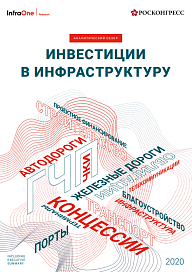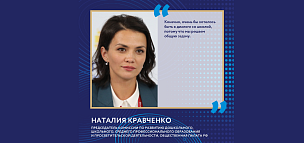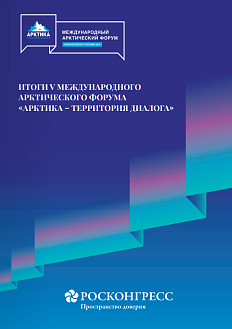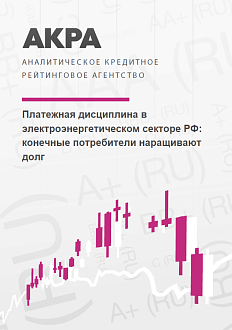Private investors are waiting for clarity from the government on the projects that it plans to launch
Consolidated budget spendings on infrastructure in 2019 accounted for 2 trillion rubles and grew by almost 200 billion rubles in current prices. Their share in GDP grew only by 0.1 p. p. up to 1.8% that year. Weak growth is largely due to the ‘uncertainty’ of the comprehensive plan of infrastructure development and the lack of clarity on many projects.
In 2019 the public and the private sector allocated about 4.9 trillion rubles to infrastructure. That is only 0.5% more than in the previous year. The ratio of public and private investments in projects has shifted towards weakening of investors’ participation.
Investments in public infrastructure are still not sufficient for the development of infrastructure, most of them are allocated to maintaining existing facilities. For reaching significant economic growth due to infrastructure, in InfraOne Research estimation, at least 6.7 trillion rubles are lacking in 2020 and by 2022 this amount may increase to 7.8 trillion rubles.
** Extrabudgetary infrastructure investments have been estimated on the basis of data on the capital investments structure broken down by economic activities: InfraOne Research excluded realty construction costs, investments from industrial, manufacturing and agricultural enterprises, as well as financial and trade operations from this indicator. This category includes national banks and companies, private businesses and foreign investors.
Private investors are ready to invest in infrastructure but the lack of ready-for-launch projects at the market is still a limitation
The minimum additional infrastructure need for investments in 2021 amounted to 3.4 trillion rubles while 7.2 trillion rubles is required for the accelerated growth of the economy. InfraOne Research specialists believe that even minimal additional need completion will not be covered in the next year or two.
According to InfraOne Research estimates, the potential volume of extrabudgetary investments has grown for the year by 7.5‑12.6%. Private investors are ready to invest up to 2.5‑2.9 trillion rubles in Russian infrastructure. However, most of these funds (73%) can be provided by companies related to or owned by the state, and their share increased in 2019. The lack of ready-for-launch and high-quality projects at the market (especially those that are valued in a range of 5‑6 billion rubles and are attractive to large investors) is still a limitation for extra-budgetary investments’ inflow.
It remains unclear how the draft law on investment protection and promotion agreements will affect private investments in infrastructure
The state plans to mobilize private investments but the draft law on investment protection and promotion agreements after its adoption in its current version could ‘stop’ investments in infrastructure and demotivate investors to participate in projects. In fact, the document changes a significant part of the basic principles of concession and PPP laws. It will be unprofitable for investors to launch new projects, especially in the transport or social spheres.
The Ministry of Finance believes that the new law could attract up to 30 trillion rubles of investments over the next three years. No country has invested such a volume in new projects within such short span of time.
Despite a decrease in investment volume it’s too early to say that interest to the instrument has fallen
According to InfraOne Research calculations, the total volume of agreements concluded in 2019 on the concession market decreased by 44% year-over-year (312 billion rubles), and their number fell by 10% (to 67). Decrease in investment volume is attributed to a shrink in the number of projects over 50 billion rubles from three in 2018 to one last year (a bypass of Togliatti with a bridge across the Volga). But according to InfraOne Research, it doesn’t mean that interest to the instrument has fallen: the number of concessions launched in the qualified market segment (projects over 1 billion rubles) remained — 31 projects.
The updated national infrastructure projects pipeline that can be launched in the next 1‑3 years, includes 100 initiatives for 1.87 trillion rubles. But according to InfraOne Research estimates, only 16 projects with a declared investment volume of about 290 billion rubles are likely to be launched. Since the previous version of the pipeline (published in June 2019), agreements were concluded on 16 projects for 258.6 billion rubles. At the same time, many megaprojects were removed from the list not because of signing but on the contrary: their chances to be launched in the coming years decreased compared to what InfraOne Research expected previously.
Distribution of projects across federal districts and sectors
By the volume of investments in the national infrastructure projects pipeline the transport sector is in the lead with 86% of all planned investments, and the social sector with 39 initiatives leading by quantity of projects. Most of the pipeline projects are planned to be executed at the regional level (62 projects), but federal initiatives are in the lead by investments — accounting for 986 billion rubles. According to InfraOne Research estimates, they are more ready for implementation: their average score on potential for quick launch is 3.3 out of 5, while the regional’s and municipal’s are 2.2 and 3.1, respectively.
The projects planned for the near future are almost equally distributed throughout the country; the plans of each of the federal districts comprise 12‑20 projects except for the Southern Federal District where, in InfraOne Research estimate, only six projects can be launched and the North Caucasian Federal District which does not have any projects at all. The most capital-intensive as always are concentrated in the Central Federal District; 14 of its projects included in the list account for almost one-third of all investments, or 558.9 billion rubles. These projects are closer to launch: four projects scored 5 and another four projects scored 4.
Prospects for infrastructure investments growth in Russia in 2020
The first year of the May decree implementation did not impact the infrastructure market. Despite the fact that the comprehensive plan for backbone infrastructure development alone requires 3.26 trillion rubles of extrabudgetary support by 2024 this has not boosted the concession and PPP market development. Government agencies especially regional ones continue to use more familiar tool of public procurement whereas investors are still held back by the lack of welldeveloped projects.
The project launch schedule can be met if there are no significant changes in the infrastructure investment market and the legislative regulation remains stable. Experience has shown that it can take at least three to five years to adopt a new tool.






